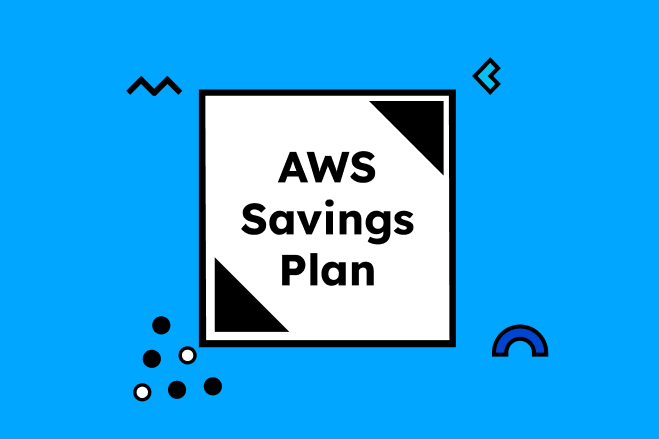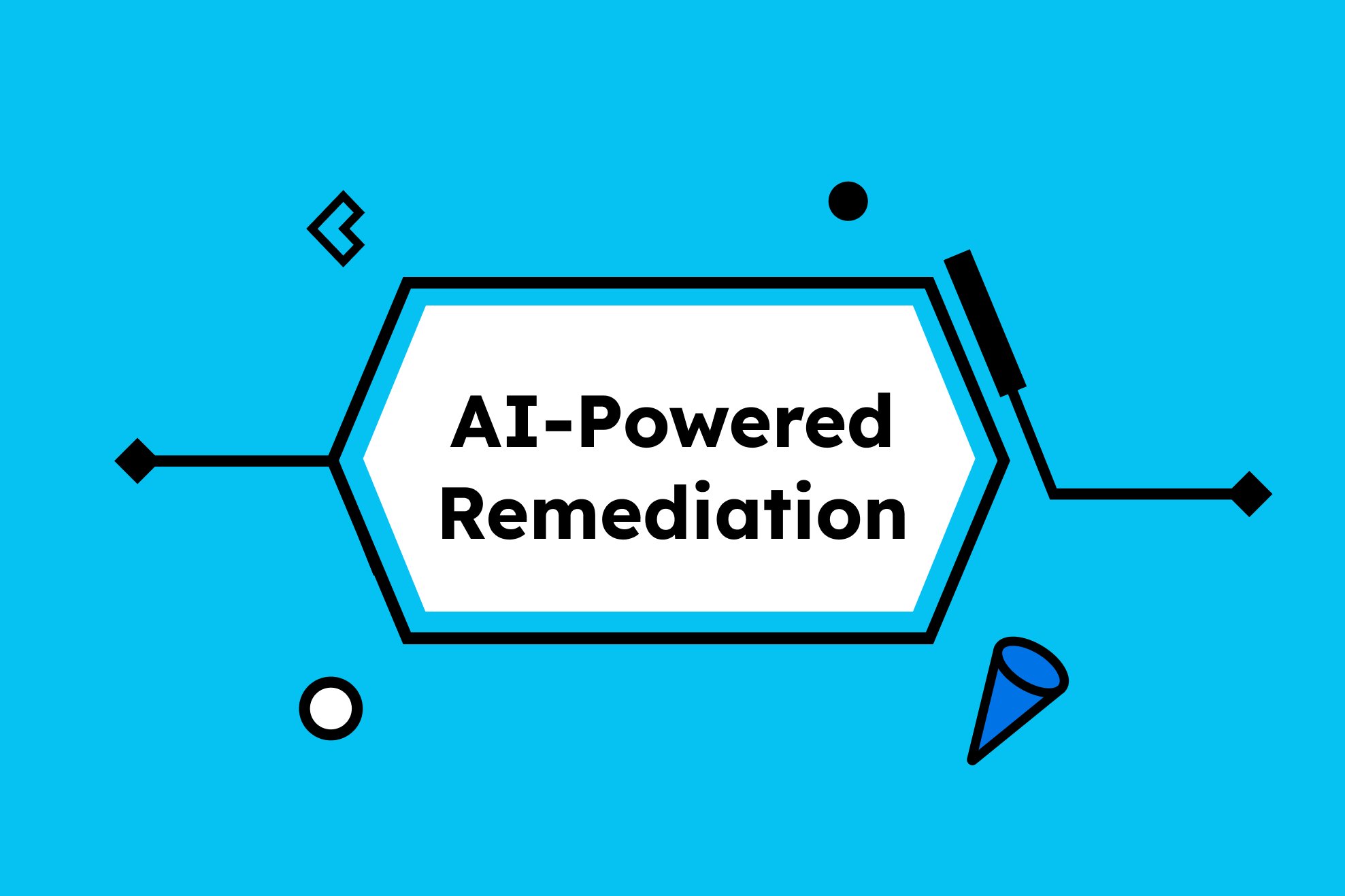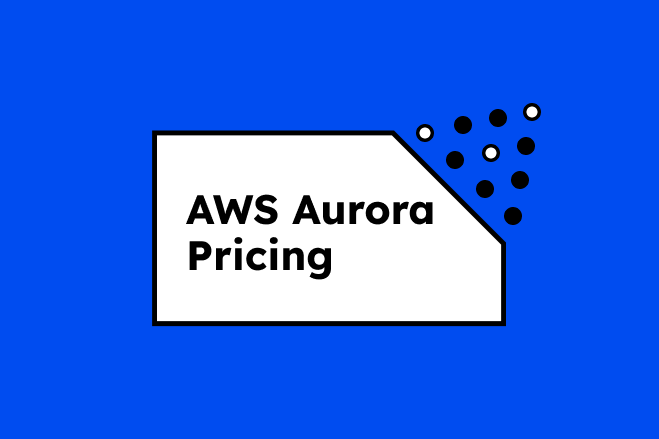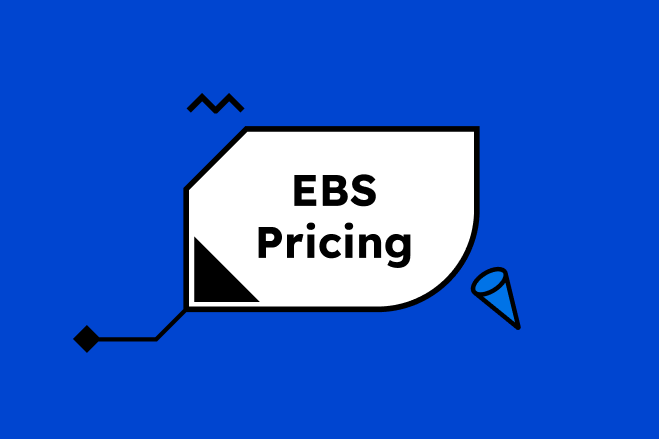Table of Contents

Managing cloud costs in AWS often feels like a balancing act between performance and predictability. With On-Demand pricing adding unpredictability and Reserved Instances requiring rigid commitments, AWS Savings Plans offer a welcome middle ground—but only if you know how to use them strategically.
This guide breaks down the nuances between Savings Plans and Reserved Instances, explores how they support FinOps by fitting into modern DevOps workflows, and shows how platforms like CXM can help you optimize cloud savings without slowing innovation. Whether you're managing legacy systems or scaling microservices in CI/CD pipelines, the right savings strategy can protect both your budget and your team's momentum.
Savings Plan AWS vs Reserved Instances: What's the Difference?

Regarding long-term cost optimization in AWS, the two heavyweight contenders are Savings Plans and Reserved Instances (RIs). Both offer significant discounts compared to On-Demand pricing. Still, they diverge wildly in how they work, how flexible they are, and how well they fit into fast-paced development environments.
Which one is better depends on your cloud infrastructure strategy.
Below, we break down their key features, from pricing structure to flexibility to developer impact, so you can decide which model better suits your infrastructure strategy, whether you're running a stable fleet of EC2 instances or deploying ephemeral workloads through CI/CD pipelines.
AWS Savings Plan vs Reserved Instances: Feature Comparison
|
Feature |
AWS Savings Plan |
Reserved Instances (RIs) |
|
Flexibility |
Applies across instance families, sizes, regions (with Compute SP) |
Locked to instance type, size, AZ, and platform (unless Convertible) |
|
Scope of Coverage |
Covers EC2, Fargate, Lambda (Compute SP); EC2 only (EC2 SP) |
Covers EC2 instances only |
|
Term Commitment |
1 or 3 years |
1 or 3 years |
|
Billing Granularity |
Per hour |
Per hour |
|
Discount Model |
% discount over On-Demand based on usage commitment |
% discount for committing to a specific configuration |
|
Instance Modifiability |
Automatic (Compute SP adapts to usage) |
Manual modification for Convertible RIs only |
|
Upfront Payment Options |
All upfront, partial upfront, no upfront |
All upfront, partial upfront, no upfront |
|
Marketplace Support |
Not available |
Can buy/sell in RI Marketplace |
|
Target Audience |
Developers, FinOps teams looking for automation and flexibility |
Cloud admins with predictable workloads |
|
Modeling Complexity |
Appears simple (“easy button”) but deceptively hard—coverage scope can lead to mistakes |
Looks straightforward but requires careful fleet-level planning; instance-level view is insufficient |
Pros & Cons: Developer Point of View
In general, AWS Savings Plans deliver better support for DevOps velocity, multi-service deployments, and cloud-native habits. Meanwhile, Reserved Instances win on price for stable, legacy-heavy environments where predictability trumps flexibility.
AWS Savings Plans
Pros:
- High Flexibility for Agile Teams
Compute Savings Plans apply discounts regardless of instance size, family, OS, or region (within a single account or consolidated billing family). This makes them ideal for DevOps teams whose workloads shift frequently due to autoscaling, spot fallback, or region failovers. Developers don't have to worry about “breaking the commitment” by deploying a different instance type mid-sprint. - CI/CD-Native Optimization
AWS Savings Plans complement CI/CD workflows where environments spin up and down frequently. For example, dynamic staging or test environments using mixed EC2 and Fargate workloads will still receive coverage—there is no need to pin deployments to specific instance specs. - Service Breadth (Lambda, Fargate)
Unlike RIs, Compute Savings Plans extend to Lambda and Fargate, supporting modern serverless and containerized architectures. This allows developers to keep costs low while leveraging newer AWS paradigms without architectural compromise. - Zero Management Overhead
Once committed, Savings Plans apply automatically to matching usage. No need to track utilization, modify reservations, or optimize purchasing schedules. This supports lean DevOps teams with limited FinOps overhead.
Cons:
- Slightly Lower Discount Ceiling
While still substantial (up to ~66% off), Savings Plans typically offer slightly lower discounts than Standard RIs, especially for highly predictable, static workloads. Cost-conscious teams might miss out on marginal savings in exchange for flexibility. - No Secondary Market or Exchange
Unlike RIs, unused Savings Plan commitments cannot be sold or transferred. Once committed, you're locked in, making miscalculated commitments potentially costly over a 3-year term. - Visibility Required for Efficient Commitment
To commit effectively with Savings Plans, developers must have accurate, long-term visibility into usage patterns and workload stability. Commitments are based on hourly spend, so if actual usage fluctuates or falls below the committed level, the unused portion still generates cost without delivering value. Additionally, Savings Plans don't apply to Spot Instances. If your strategy shifts toward Spot to optimize for cost or capacity, you could face unintended overspend despite having a Savings Plan in place.
Reserved Instances (RIs)
Pros:
- Maximum Discount Potential
Standard RIs can yield up to 72% savings over On-Demand pricing, especially with All Upfront, 3-year commitments. For developers managing stable, long-running workloads (e.g., monolithic production systems), this offers unparalleled cost efficiency. - Convertibility for Flexibility (Sort Of)
Convertible RIs allow some leeway. Teams can change instance families, OS, or tenancy as requirements shift. This is helpful for gradual architecture evolution (e.g., migrating from C5 to C6a). - RI Marketplace for Exit Strategy
Standard RIs can be resold in the AWS RI Marketplace, giving developers a financial escape hatch if usage patterns or project requirements change dramatically.
Cons:
- Rigid Commitments Limit Agility
RIs require upfront definition of instance type, family, OS, and AZ (unless Convertible). This is frictional for modern, dynamic environments with mixed workloads or frequent architectural experimentation. - Manual Overhead for Planning and Optimization
Developers or FinOps must accurately forecast capacity, track usage, and coordinate instance configurations across teams. Mistakes (e.g., committing to an underutilized instance type) translate into stranded costs. - Incompatibility with Serverless / Modern Services
RIs do not apply to Fargate or Lambda, so container-native or serverless-first teams will see diminishing returns. This limits RIs to more traditional EC2-based infrastructure.
Use Case Examples
|
Use Case |
Best Option |
Why? |
|
CI/CD Pipelines |
Compute Savings Plans |
Adapts to the scale of builds, tests, and deployments |
|
Short-lived Staging |
Savings Plans |
No need to match instance specs manually |
|
Predictable Prod API |
Reserved Instances |
Long-term, steady usage benefits from deeper discounts |
|
Serverless Applications |
Savings Plans (Compute) |
Supports Lambda and Fargate; RIs do not |
|
Hybrid/Spot-Fallback |
Savings Plans |
Combines well with Spot Instances when burst capacity is needed |
|
Legacy Apps on EC2 |
RIs |
Narrow workloads mapped to specific configurations |
Breaking Down EC2 Instance Savings Plans

While AWS Compute Savings Plans are praised for their flexibility, EC2 Instance Savings Plans offer deeper discounts but with architectural strings attached. For teams with predictable infrastructure patterns, EC2-specific plans can be a scalpel, while Compute Plans are a Swiss army knife.
Target Workloads for EC2-Specific Plans
EC2 Instance Savings Plans are ideal for stable, predictable environments. If your workloads, like production APIs or self-managed databases (PostgreSQL, MySQL), run on fixed instance types in a single region, the plan's rigidity becomes an advantage.
They're also well-suited for legacy monoliths with strict hardware or OS requirements, where architectural changes are rare. In these cases, the lack of flexibility aligns with operational reality.
Use EC2 SPs when your workloads involve:
- Consistent, long-running EC2 usage
- Fixed instance families and regions
- Specific OS needs (e.g., RHEL, Windows)
- Minimal use of Fargate or Lambda
- Regulatory or compliance constraints
If you're running dedicated clusters for ML inference or analytics with static configurations, or deploying in tightly regulated industries, EC2 SPs offer significant, predictable savings.
When you know what you'll run, where, and for how long, EC2 Instance Savings Plans deliver AWS's highest discounts.
Architecture Considerations
Before choosing EC2 Instance SPs, consider the following:
- Region Lock-In
Your commitment applies to a single region (e.g., us-east-1). If your workload fails over to another region or migrates geographically, discounts don't follow. - Instance Family Binding
You must lock into a specific instance family—say m6i, c7g, or r5a. If you later need to upgrade architectures (e.g., from Intel to Graviton), the plan becomes misaligned with your needs. - Operating System Matters
The discount only applies to the OS chosen at commitment time. If you commit to Linux but switch to Windows or RHEL for a portion of workloads, you lose that discount coverage. - Tightly Coupled Autoscaling
Plans only apply when the right instance family and region are in use. Spiky workloads that autoscale across mixed families may underutilize the savings potential.
When EC2 Instance Saving Plans Outperform Compute Plans
While Compute Savings Plans offer more flexibility, EC2 Instance Savings Plans can be more cost-effective when infrastructure is stable and predictable.
If your workloads run in a single region, use a fixed instance family, and rely on a consistent OS, EC2 SPs can offer an extra 5–10% savings. They're ideal for steady-state environments like backend APIs, legacy systems, or workloads with licensing constraints (e.g., Windows, RHEL).
These plans also work well when scaling is vertical, adjusting instance size rather than switching families, and when services like Lambda or Fargate aren't in use.
In compliance-heavy industries like healthcare or finance, where deployments are locked to specific regions and configurations, EC2 SPs provide reliable, low-risk cost optimization.
How to Choose the Right AWS Savings Plan

Choosing between AWS Savings Plans means aligning your commitment strategy with how your infrastructure actually behaves. Whether you're running monoliths in production or ephemeral CI/CD workloads, the right plan can make or break your optimization efforts.
Evaluation Checklist: Key Factors to Consider
Use this checklist to determine which plan aligns best with your workload and operational model:
- Workload Predictability
- Are your instance types, sizes, and regions relatively fixed over time?
- Do you have long-running production workloads with consistent usage patterns?
- Commitment Length
- Can you reliably forecast usage for one year, or would a three-year plan provide more savings with acceptable risk?
- Are you able to front-load capital for all-upfront options, or do you need monthly payment flexibility?
- Service Scope
- Will your workloads extend beyond EC2 (e.g., Fargate, Lambda)?
- Are containerized or serverless applications a growing part of your architecture?
- Architecture Evolution
- Are you planning a migration to newer instance families or regions?
- Will you be adopting Graviton-based compute or changing operating systems?
- Team and Workflow Fit
- Do your developers need flexibility to scale and shift rapidly?
- Is there a FinOps or cloud operations function actively tracking usage and optimization?
Common Buying Mistakes (and How to Avoid Them)
- Overcommitting Too Early
Teams often lock into a 3-year term before their architecture is mature. Instead, start with a 1-year Compute Savings Plan and monitor usage patterns for 3–6 months. - Underestimating Service Mix
Developers frequently introduce Fargate or Lambda mid-project. EC2 Instance Plans won't cover these. If your architecture isn't purely EC2, lean toward Compute Plans. - Treating It as a Set-and-Forget Purchase
Usage patterns shift, especially with team growth, CI/CD scaling, or regional expansion. Review your utilization quarterly to validate coverage. - Assuming All Workloads Should Be Covered
It's often smarter to partially cover workloads with Savings Plans and use On-Demand or Spot Instances for elastic or unpredictable workloads. - Ignoring Instance Family Roadmaps
Committing to older generations like c5 or m5 may cause issues if AWS deprecates or shifts incentives toward newer families (c7g, m7i, etc.). Keep an eye on hardware refresh cycles.
Tools for Smarter Forecasting
To avoid flying blind, use these tools and calculators to model commitments with confidence:
- AWS Savings Plan Calculator
Estimate hourly commitment costs and break-even points based on your usage history. - AWS Cost Explorer with Recommendations
Visualize historical EC2, Fargate, and Lambda usage. Use AWS's built-in Savings Plan suggestions to guide commitment amounts. - .
- CXM
Tools like CXM tracks and aggregates usage across savings groups and suggests savings and RI , giving platform teams the right signals at the right time on commitment readiness.
Automating Savings: Integrating Savings Plans into DevOps Workflows

Manually managing an AWS Savings Plan is like trying to fly a drone by hand during a windstorm; it might be possible, but why not let automation handle the turbulence?
In fast-paced DevOps environments, optimization needs to be continuous, real-time, and unobtrusive. That's where CXM comes in: a developer-first platform that embeds financial intelligence directly into workflows, making cloud cost efficiency feel less like finance and more like automation.
CI/CD-Friendly Approaches to Cost Optimization
Traditional FinOps platforms often focus on visibility and reporting, but that's not enough in a DevOps-driven environment. Developers need optimization signals that align with their deploy cycles, not quarterly reviews.
Here's how to make cost savings native to CI/CD workflows:
- Pre-deployment cost validation: Use hooks in your pipeline to simulate how changes in instance types, regions, or architectures would impact overall spend. While Reserved Instances and Savings Plans aren't directly tied to CI/CD activities, knowing when workloads have stabilized is crucial for commitment decisions—information only resource owners can provide.
- Real-time ownership attribution: CXM automatically identifies the developer or team responsible for each cloud resource. This ensures that the right people can surface insights on steady-state usage patterns, helping guide appropriate long-term savings commitments.
- Infrastructure visibility integrated with IaC: CXM integrates with infrastructure-as-code systems to ensure that every deployed resource is tracked and analyzed in real time. While commitment purchases like RIs or Savings Plans happen outside of code, having accurate, continuously updated data about your environment helps teams recognize when it's time to take that step.
Monitoring Usage and Adjusting Commitments
Even the best savings plan becomes obsolete if usage patterns shift. Modern teams need tooling that doesn't just alert when coverage is off; it needs to proactively recommend adjustments.
With CXM, engineering and FinOps teams can:
- Track underutilized commitments
Get alerted when your spend dips below commitment thresholds or when new workloads could be covered by existing plans. - Forecast based on real usage data
Use granular, developer validated usage data to model commitment amounts that reflect actual knowledge, not assumptions. - Keep Commitments Flexible: by consistently and progressively adding commitments to the purchase mix, CxM maintains your ability to adapt your infrastructure over time.
Why CXM Matters
CXM is an automation layer built for developers. By combining ownership tracking, workflow integration, and smart commitment logic, CXM lets companies capture savings without adding extra-load on their development teams..
In other words, CXM turns cost optimization from a finance initiative into a native part of your engineering culture that scales automatically as your infrastructure grows.
Reporting, Governance, and FinOps Alignment

The most successful savings are backed by visibility, governance, and financial trust. As cloud budgets balloon and engineering autonomy grows, aligning AWS cost strategies with finance teams becomes essential for long-term sustainability.
CXM is built with this in mind, making it easy to connect cloud cost actions taken by developers with the financial clarity CFOs and controllers demand.
Aligning Savings Plans with Finance and Budgeting Cycles
To align technical commitment strategies with financial cycles, teams need more than dashboards—they need shared planning frameworks.
Here's how to keep your engineering and finance teams in sync:
- Time Savings Plans to Budget Cycles
Match Savings Plan terms to your fiscal calendar. For instance, commit to 1-year plans during budget finalization or quarterly revisions when usage forecasts are most accurate. - Integrate Engineering Signals into Forecasting
CXM connects resource-level changes to team or service ownership. This makes it easy for finance teams to incorporate granular developer data into budget planning and commitment modeling. - Use Commitments as a Strategic Budget Lever
Position AWS Savings Plan commitments as proactive investments in cost efficiency rather than reactive discount tactics. Framing commitments as predictable, value-generating actions helps finance teams see them as part of a disciplined, forward-looking budget strategy. Encourage steady, incremental purchasing to balance savings with flexibility.
Explaining AWS Cost Strategies to Non-Technical Stakeholders
Not every stakeholder needs to understand EC2 instance types or commitment scopes. What they need is clarity, predictability, and outcomes.
Use the following tactics to bridge the gap:
- Simplify the Model
Explain Savings Plans as “subscriptions” that reduce hourly compute costs in exchange for a long-term commitment. Use comparisons to mobile data plans or software licenses to illustrate the tradeoff. - Highlight Business Outcomes
Instead of just reporting savings in dollars, frame results in total cost avoidance, improved engineering throughput, or stability in budget forecasting. - Use Visual Tools and Summaries
CXM-generated reports distill technical usage into non-technical summaries, ideal for stakeholder presentations or board-level reporting. - Maintain a Single Source of Truth
Avoid confusion from multiple spreadsheets or conflicting reports. A unified platform like CXM keeps data aligned between engineering, finance, and leadership.
CXM's Developer-First Philosophy on AWS Savings

In most organizations, cloud savings plans are treated like a finance problem, isolated from the daily work of the engineers who generate the spend. CXM flips that model. Its platform is built around a developer-first philosophy that embeds cost awareness into engineering workflows without introducing friction, delays, or manual oversight.
How Cloud Ex Machina Enables Savings Without Slowing Innovation
Traditionally, AWS Savings Plans are managed post-deployment by finance or operations teams, leading to three common problems: misaligned coverage, missed savings, and developer blind spots. CXM addresses this head-on by integrating cost logic into the development pipeline itself.
- Real-Time Resource Ownership
From day one, CXM automatically identifies the owner of every cloud resource. This enables per-team cost attribution and ensures that commitments (like Savings Plans) are directly aligned with usage patterns. - Non-Intrusive Cost Intelligence
Engineers aren't expected to become FinOps experts. Instead, CXM provides simple, context-aware signals, like “this instance will be covered under your existing Savings Plan” or “you're about to create usage outside your commitment,” and asks them the right questions about readiness to commit - Zero Friction, All Signal
No dashboards to monitor, no approvals to chase. Developers receive Slack or IDE notifications tied to their actual deploy context. That means savings decisions happen in the flow of work—not after the fact.
Embedding Savings Plans into Developer Workflows

CXM builds cost optimization into the workflow.
Here's what that looks like in practice:
- Team-Based Cost Views
CXM shows every team what they own, what they spend, and how much they're saving. This visibility empowers engineering managers to own their cost performance without guesswork. - Forecasting from the Ground Up
Unlike top-down models built by finance, CXM forecasts future cloud spend based on actual developer behavior. That means Savings Plans are sized with confidence, using data from the people who generate the usage. - Committing with flexibility in mind: Gradually acquiring commitments means that you build up flexibility and will maximize your savings in the long run.
Conclusion
An AWS Savings Plan isn't just a financial lever—it's a strategic tool for engineering-led organizations. Choosing the right plan, aligning it with team behavior, and automating its implementation through platforms like CXM allows you to save more, move faster, and stay in control.
By embedding cost intelligence directly into your workflows, you shift cloud savings from a finance project to a native part of how your teams build. The result? Predictable spend, fewer surprises, and a happier path from idea to deployment.
Optimize your cloud environment today with CXM. Book a Demo.
Effortlessly Manage Your Cloud, Improve Efficiency, and Increase Your Returns.
Newsletter Signup
Subscribe to our newsletter to receive the latest news.








